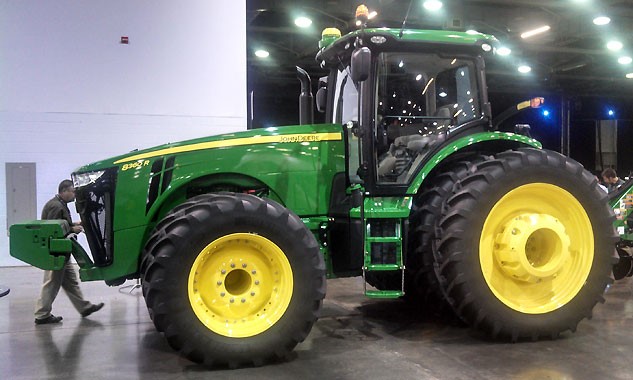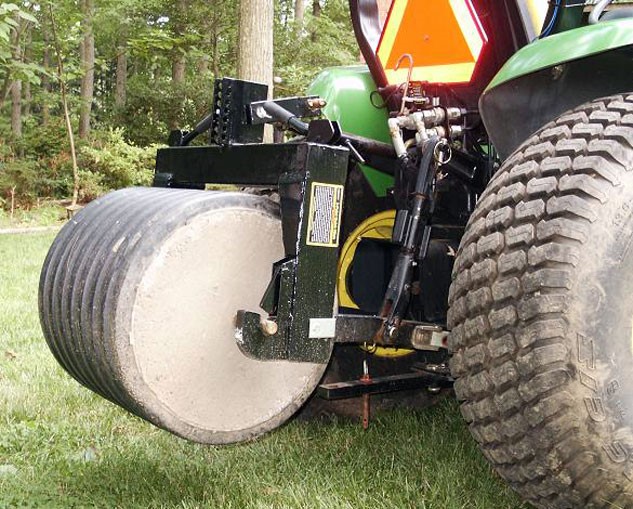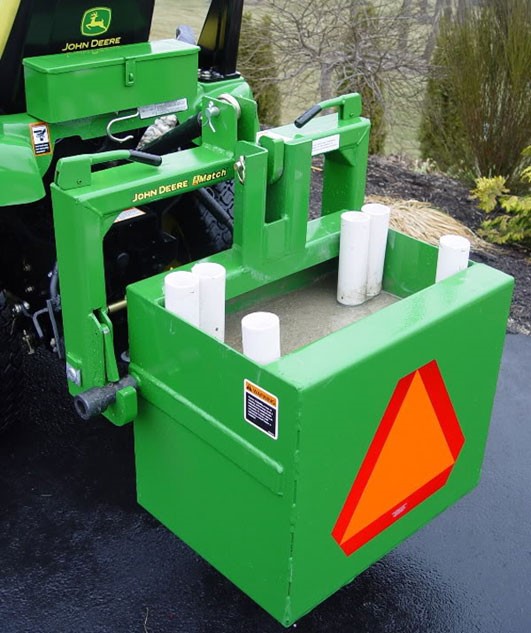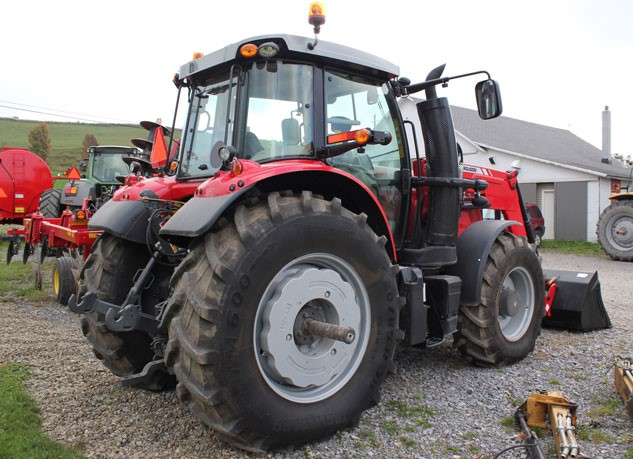Tractor Ballast and Weighting
Tractor Ballast is an important step to optimum performance
Purchasing a tractor, whether for one task or many, has several things to consider before the best use of your money can be achieved. Properly setting up the Tractor Ballast enables you to balance fuel economy, transmission efficiency, work effectiveness, tire life, loading capacities, and other tasks you’ll be asking it to perform.
When your tractor is set up with a front end loader having the rear of the tractor ballasted to offset the weight of the material you’re moving or pushing with the loader is crucial. When you’re using heavy 3-point hitch attachments, the front of the tractor must be weighted appropriately.
Another important consideration when determining weighting your tractor is wheel slippage. Several issues can arise with excessive slip while a tractor works. Tire wear, transmission problems, inefficient field operations, just to name a few.
Fluids as Tractor Ballast
Flowable fluids are fairly standard with tractors, especially those equipped with front end loaders. These include:
Water
The element of life is obviously the cheapest form of weighting your tires, but one of the worst choices. If temperatures drop below freezing, there could be real trouble. Water is lighter than any other source at slightly over 8.0 lbs/gallon, so it’s not very heavy compared to other sources. Finally, over time, it will corrode the steel of the wheels. Avoid using water alone for ballast.
Calcium Chloride – Calcium chloride has been a standard for many years in the past. Advantages include its ability to withstand temperatures between -30-degrees F to -40-degrees F depending on the concentration. It has good density, at nearly 12.0 lbs/gallon. The drawbacks include that it requires tubes, increasing the cost of the tire. When it is exposed to air, it will attract water and rust metal surfaces, breaking down the rims and valve stems. It requires specialized equipment with specially trained personnel to fill it. There are important safety considerations, and it is toxic. In the US, many states classify it as a hazardous waste, so when the tire blows or leaks, problems can result to plants, animals or humans exposed to it. It is being phased out in many areas of the world.
Anti-Freeze/Glycol, Windshield Washer Solvent, Methanol – though used in some places, none of these are advisable. They don’t weigh much more, and in the case of methanol (flammable), it actually weighs less, than water. All have varying levels of toxicity, but none of them are non-toxic.
Rim Guard – Rim guard is now a standard material for tire weighting. It is essentially beet juice. It’s inexpensive, has good weight, similar to Calcium Chloride, is non-corrosive, and it is non-toxic. Tubes are not required either. It may attack rubber joints in the valve stem, however, so metal stems are recommended.
Your dealer, service technician, or manufacturer, has charts and look-up tools that can match your weighting to your loads. Tell them what you plan to do with the tractor, and they’ll refer you to those recommended weighting guidelines.
Physically Weighting the Tractor
In addition to fluid weighting, complementing it, or using it entirely on its own, there are several ways to weight the tractor on the front or rear to accomplish the same effect.
3-pt hitch concrete ballast
In this example, the tractor is set up with turf tires, meaning it is probably not primarily used for its loader capacity. A quick-detach, 3-pt hitch can solve this easily, just hook up when you’re asking it to move loads, and unhook it when you’re on turf, or don’t want to leave a ‘footprint’.
In this case, a Ballast Box, specifically designed for this purpose, is filled with concrete. You could use rocks or other heavy materials as well. In this example, a clever farmer has PVC pipes so he can store tools like rakes and shovels while working.
Suitcase Racks are a common way to provide front (or rear) ballast. The advantage is that you can vary the number of weights you hang on the rack to match your needs. The only consideration is that it does extend the length of the tractor, so can be tricky to know your limits when in tight quarters.
A Bar Axle enables you to mount wheel weights onto the rear rims of the tractor, and with the axle extension, allows for additional weights to be added as needed.
Read more about it:
Tractor.com – Tractor Ballasting – Tips and Options (primary source for this article)






